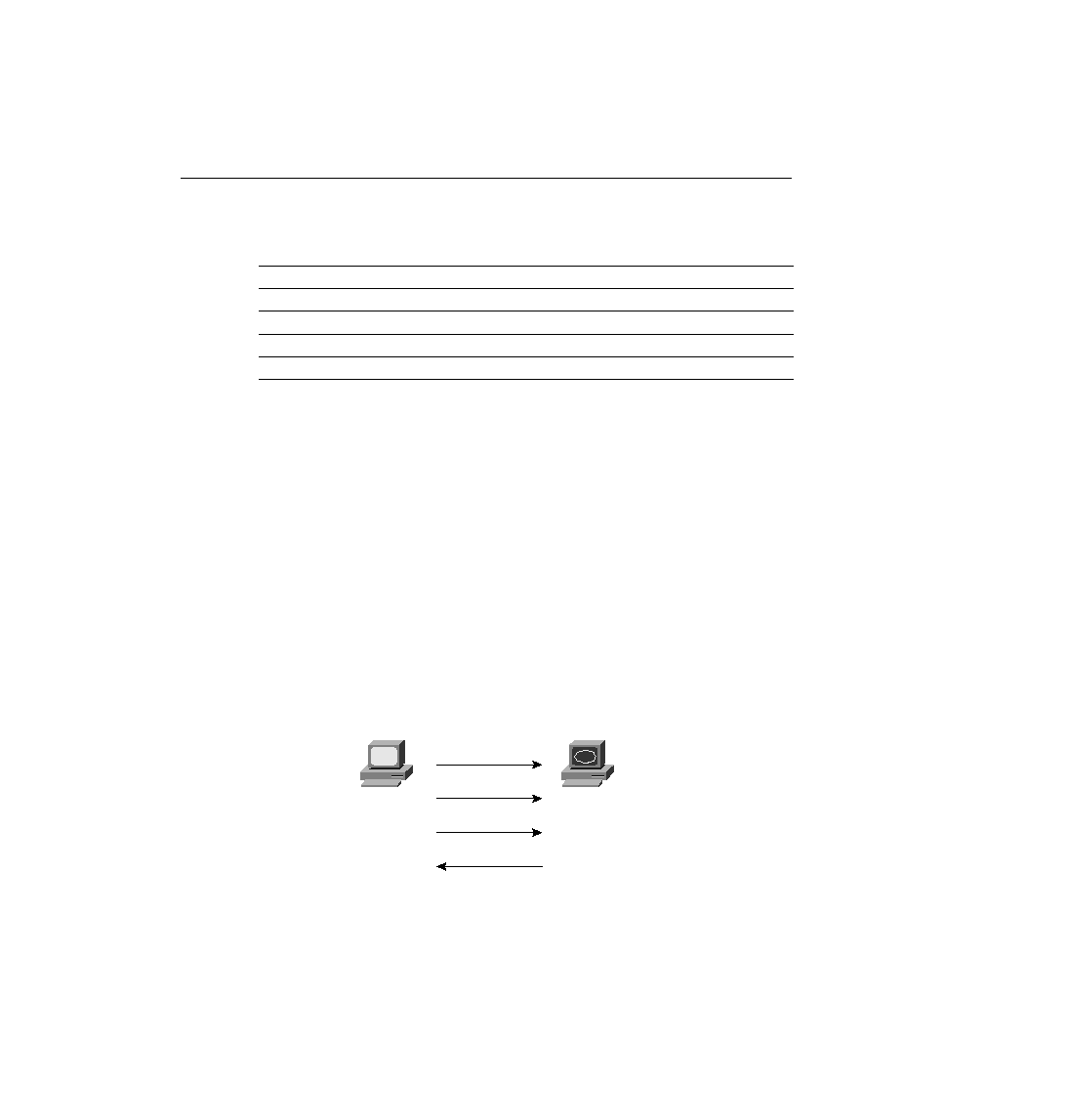
the data after it is received by lower-layer protocols. Consider that definition with the four
socket connections in Table 5-2, for packets destined to the server (Curly). All destination
socket information is for 10.1.1.3, with TCP, but the use of different port numbers allows Curly
to choose the correct service to which to pass the data. Also notice that the port numbers do not
have to be unique. The FTP client on Moe and the Telnet Client 1 on Larry both use port 1027,
but their sockets are unique because each uses a different IP address. Also, when the Telnet
servers send data back to Clients 1 and 2, Larry knows how to multiplex to the correct client
application because each uses a unique port number on Larry.
of TCP. To accomplish reliability, data bytes are numbered using the sequence and acknowl-
edgment fields in the TCP header. TCP achieves reliability in both directions, using the
sequence number field of one direction combined with the acknowledgment field in the
opposite direction. Figure 5-4 shows the basic operation.
next byte to be received; this is called
length; the sequence and acknowledgment fields count the number of bytes.